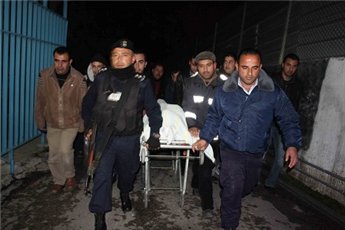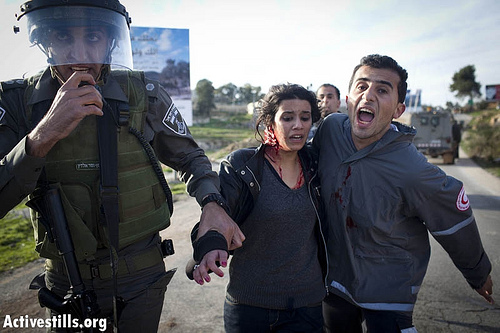Tag: Tear-Gas Canister
-
Protester shot and killed at a demonstration at Qalandya checkpoint today, clashes continue in Jerusalem and the West Bank
25 February 2012 | Palestine News Network During a violent protest in which the IOF used live bullets, tear gas and rubber bullets, twenty five year old Talat Ramia, was shot in the shoulder and died later from his injuries. According to medics, five other protesters were injured. An Israeli army spokesman said the incident…
-
13 injured in Nabi Saleh during weekly non-violent protest
3 February 2012 | International Middle East Media Center During the weekly non-violent protest in the village of an-Nabi Saleh on Friday several injuries were reported including that of a French citizen who was struck in the neck by an Israeli projectile. The young woman, reported to be named Amessi, was struck in the neck,…
-
Left behind at the scene of the crime: Israel wages war on Bil’in
by Wedad Yassin 30 January 2012 | Sixteen Minutes to Palestine Weeks ago, Wedad Yassin traveled back to Ein Yabrud, a village near Ramallah in the West Bank, to visit her family and to experience Palestine’s rich cultural heritage. Her intention had been to tour through the Al-Khalil district, Ramallah, Bil’in, and Jerusalem. However, she…



